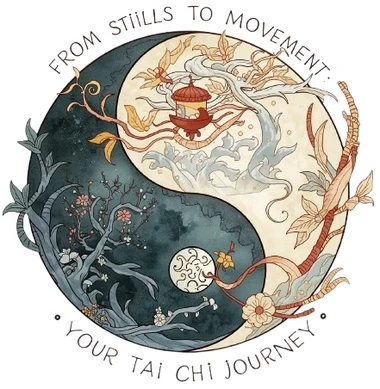Qigong, an ancient Chinese practice rooted in Traditional Chinese Medicine (TCM), has sparked global curiosity—and controversy. Is it a legitimate health practice, or just pseudoscience? Let’s explore the evidence.
What is Qigong?
Qigong combines movement, breath control, and meditation to cultivate "qi" (vital energy). It’s practiced for health, relaxation, and even martial arts. While its spiritual and philosophical roots are deep, modern Qigong emphasizes health benefits, often taught in universities and hospitals in China.
Scientific Evidence: What Do Studies Say?
Health Benefits: Research shows Qigong can improve balance, reduce pain, and enhance mental well-being. A 2024 review found it effective for chronic conditions like hypertension, diabetes, and depression, with 97% of clinical studies reporting positive outcomes.
Limitations: Many studies are small or lack rigorous controls. While Qigong is generally safe, claims of "external qi" healing (e.g., distant energy transfer) lack scientific validation.
Mechanisms: Qigong’s benefits likely stem from stress reduction, improved circulation, and mind-body integration—not mystical energy. It’s often compared to yoga or tai chi for its holistic approach.
Controversies and Pseudoscience
Exaggerated Claims: Some practitioners promote Qigong as a cure-all, even for cancer or supernatural feats (e.g., "telekinetic healing"). These claims are unsupported and often linked to fraud.
Cultural Context: In the 1980s–90s, China’s "Qigong Fever" saw a surge in pseudoscientific claims, leading to government crackdowns on fraudulent practices. Today, legitimate Qigong is distinguished from scams by its focus on self-practice and evidence-based outcomes.
Conclusion
Qigong is real as a mind-body practice with documented health benefits, but its supernatural claims are not scientifically proven. Like yoga or meditation, it’s a tool for wellness—not magic. Always consult healthcare providers before using it as therapy.
Your Turn: Have you tried Qigong? What was your experience? Let’s discuss!
What is Qigong?
Qigong combines movement, breath control, and meditation to cultivate "qi" (vital energy). It’s practiced for health, relaxation, and even martial arts. While its spiritual and philosophical roots are deep, modern Qigong emphasizes health benefits, often taught in universities and hospitals in China.
Scientific Evidence: What Do Studies Say?
Health Benefits: Research shows Qigong can improve balance, reduce pain, and enhance mental well-being. A 2024 review found it effective for chronic conditions like hypertension, diabetes, and depression, with 97% of clinical studies reporting positive outcomes.
Limitations: Many studies are small or lack rigorous controls. While Qigong is generally safe, claims of "external qi" healing (e.g., distant energy transfer) lack scientific validation.
Mechanisms: Qigong’s benefits likely stem from stress reduction, improved circulation, and mind-body integration—not mystical energy. It’s often compared to yoga or tai chi for its holistic approach.
Controversies and Pseudoscience
Exaggerated Claims: Some practitioners promote Qigong as a cure-all, even for cancer or supernatural feats (e.g., "telekinetic healing"). These claims are unsupported and often linked to fraud.
Cultural Context: In the 1980s–90s, China’s "Qigong Fever" saw a surge in pseudoscientific claims, leading to government crackdowns on fraudulent practices. Today, legitimate Qigong is distinguished from scams by its focus on self-practice and evidence-based outcomes.
Conclusion
Qigong is real as a mind-body practice with documented health benefits, but its supernatural claims are not scientifically proven. Like yoga or meditation, it’s a tool for wellness—not magic. Always consult healthcare providers before using it as therapy.
Your Turn: Have you tried Qigong? What was your experience? Let’s discuss!
1
